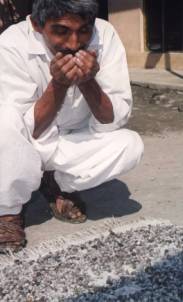The Upper Necaxa Totonac project is dedicated to the documentation and analysis of the Upper Necaxa language. The project was begun in 1998 by David Beck, then a PhD student at the University of Toronto. Since then, the project has collected materials for:
- a dictionary (Beck 2011) and practical vocabularies (Beck 2001, 2012b)
- a grammatical sketch (Beck 2004, 2011) and a reference grammar (in progress)
- an extensive collection of oral texts and traditional folktales
The project has also begun collecting ethnobotanical information, as well as video documentation of possibly the last children who will acquire the language as a native tongue. Although there are currently some 3,000 speakers of Upper Necaxa Totonac, the language is in danger of extinction, and could well disappear within another generation.
The Upper Necaxa project aims to create a record of the language as it is spoken today, and of the cultural traditions of those who speak it. Through this work we hope to provide motivation and resources for those members of the community who value their language and wish to revitalize and preserve it.

Longino Barragán shows David how to identify vanilla vines.
From the scientific perspective, this project creates a record of a previously undescribed language, with many important and unique linguistic properties. As languages such as Upper Necaxa disappear, linguists of all specializations lose the typological data we need to develop, test, and validate claims about the universal features of human language and its acquisition. This project is vital to ensure the existence of a record of the Upper Necaxa language and the way it is spoken in daily life, so that academics, educators, and language activists are armed with the materials to study, teach, and revive the language for future generations.
.
Funding for this project provided by the Social Sciences
and Humanities Research Council of Canada.


